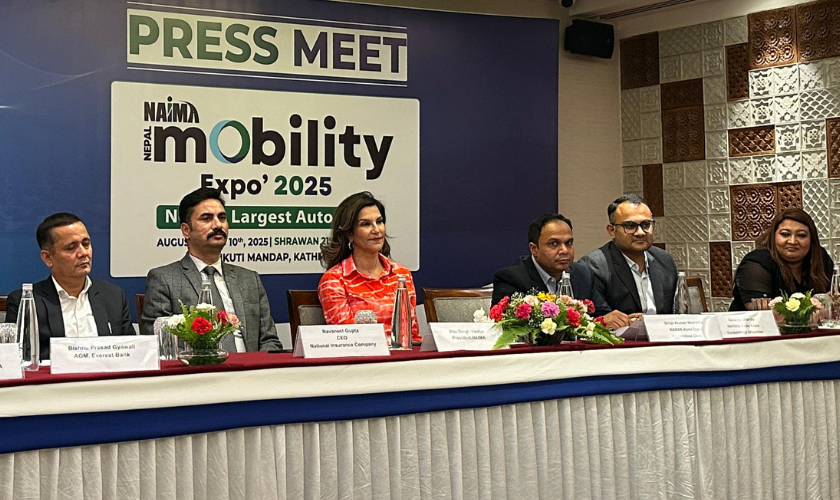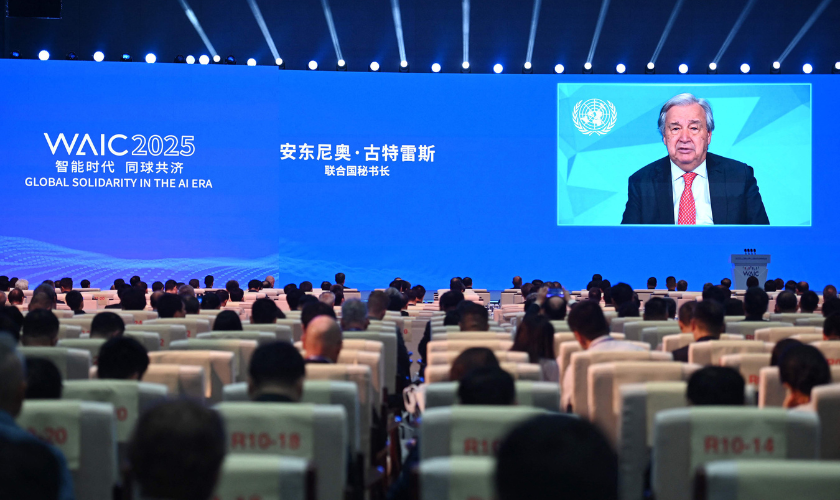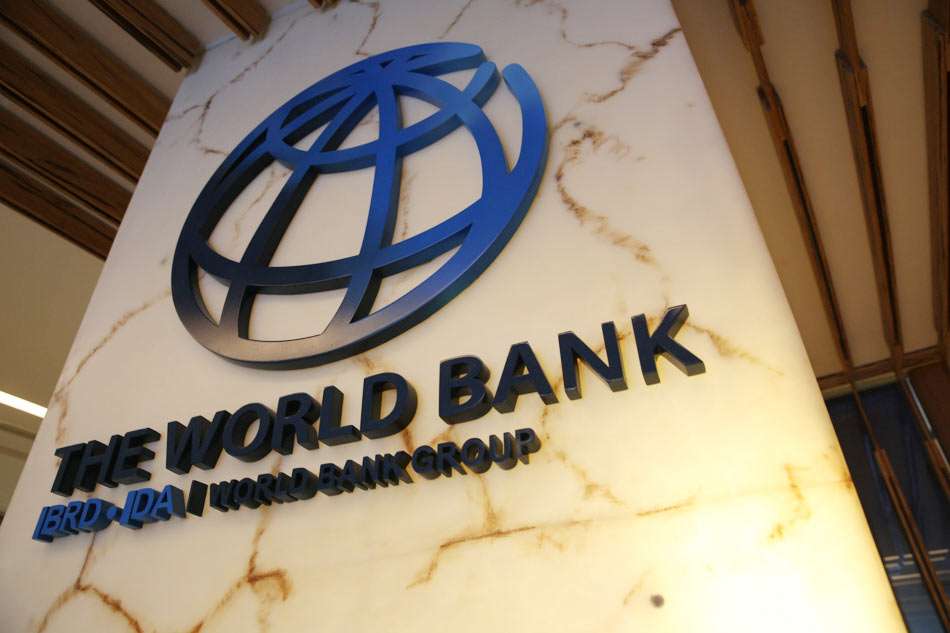With over three decades of experience in South Asia’s tourism industry, veteran hotelier Souvagya Mohapatra has been instrumental in driving Atmosphere Core’s ambitious expansion across India, Sri Lanka, Nepal and Bhutan. Atmosphere Core, a hospitality company that began its journey in the Maldives, is now set to enter Nepal with its first property in Banepa. During a recent visit to Kathmandu to sign an agreement for the company’ debut hotel in the country, Mohapatra spoke with Mukul Humagain and Tamish Giri of New Business Age about his strategic vision, evolving travel trends and why Nepal’s unique appeal as a destination for luxury hospitality. Excerpts:
You have led Atmosphere Hotels & Resorts in diverse South Asia markets. What unique opportunities do you currently see in Nepal’s hospitality landscape?
I joined Atmosphere Hotels & Resorts in 2021. I have leveraged my extensive experience from the Maldives—a global benchmark for luxury hospitality—to drive our growth. Following our expansion into India in 2022, where we have signed 19 properties under our Atmosphere and OZEN brands, I have closely studied Nepal’s tourism landscape. With a growing number of international flights and rising tourist arrivals, it is evident that Nepal presents a significant gap, and opportunity, in the luxury hospitality segment. Our philosophy centers on delivering all-inclusive luxury. From the moment guests check in, they can enjoy a seamless stay without worrying about bills or hidden costs. We make them feel at home with exceptional cuisines, impeccable service, and heartfelt hospitality. Nepal’s stunning landscapes and rich cultural heritage make it an ideal setting for this kind of experiential luxury. That is why we are excited to launch our signature Atmosphere offering here.
How does Atmosphere’s brand philosophy align with the cultural and natural richness of destinations like Nepal and Bhutan? What key factors do you consider before entering a market like Nepal?
Our brand is built on the ethos of the "Joy of Giving"—not a marketing tagline, but a deeply held value that defines who we are. Nepali culture resonates beautifully with this philosophy, with hospitality that feels instinctive and heartfelt. People welcome guests with genuine warmth and sincerity—it is woven into the cultural fabric. These values align closely with our brand’s vision. When entering a new market, we do not impose luxury, we integrate it. We embrace local architecture, hire and train local talent, showcase regional cuisines and honor local traditions. Our resorts are designed to feel like natural extensions of their surroundings, acting as cultural ambassadors.
What specific partnerships or projects is Atmosphere exploring in Nepal? How does Nepal fit into your broader regional growth strategy?
Nepal is a central pillar of our South Asian growth strategy. We are already well-established in the Maldives, with nine operational resorts and four more in the pipeline. Our target is to have 25 properties in India. Now, our focus is firmly on Nepal. During this visit, we are finalizing an agreement for a 51-room luxury resort in Banepa, just outside Kathmandu. The property, currently under construction, is set at an elevation of approximately 5,000 feet and promises serene views and a peaceful atmosphere. This property will open within a year. We are also exploring opportunities in Pokhara and Chitwan. Since announcing our Nepal entry, we have seen strong interest from local partners. We envision developing three to five high-end properties across the country in the coming years.
Post-pandemic, what trends are shaping luxury and experiential travel in South Asia? How have guest expectations evolved, and how is Atmosphere adapting?
The pandemic has fundamentally reshaped travel behavior. Today’s travelers, millennials in particular, are more spontaneous, often taking multiple holidays a year. Even a long weekend is seen as an opportunity to travel. There is a clear surge in road trips, bespoke accommodations, and destination-driven experiences. Guests now seek more than a room and a meal—they crave for meaningful experiences, from regional cuisines and wellness retreats to adventure activities and sustainable stays. To meet these demands, we have introduced innovations like dedicated butler services. From unpacking luggage to curating personalized itineraries, our butlers elevate the entire guest journey. We are also enhancing our culinary offerings and designing resorts as lifestyle destinations. From wellness therapies inspired by local traditions to curated cultural performances, our properties offer more than just a place to stay—they offer a true sense of place.
What key differences do you observe across the hospitality markets in India, Sri Lanka, Bhutan and Nepal? How does Atmosphere adapt its strategy in each of these countries?
At its core, South Asia is united by a deeply rooted ethos of hospitality. Whether in India, Bhutan, Sri Lanka or Nepal, the people are naturally welcoming and service-oriented—a shared spirit that makes our work much more rewarding. However, each market is unique. India’s vast diversity demands region-specific strategies. Bhutan prioritizes high-value, low-impact tourism and rightfully safeguards its ecological and cultural integrity. Sri Lanka, despite recent economic challenges, continues to shine as a destination for boutique and experiential travel. Nepal stands out for its unique blend of adventure, spirituality and culture, and is steadily emerging as a promising luxury market.
Atmosphere adapts by embedding a sense of place in every resort. In Nepal, that might mean incorporating Newari architectural motifs and local culinary traditions. In Sri Lanka, the emphasis could be on Ayurvedic wellness. It is all about telling authentic local stories through the lens of refined luxury.

You said Atmosphere is expanding rapidly in India and the Maldives. Could you share more on the vision behind this scale and pace?
Our journey began in 2013 under the visionary leadership of our founder, Salil Panigrahi. From a single resort in the Maldives, we have grown to nine award-winning properties, many of which are ranked among the best in the world. Today, we welcome guests from over 35 countries and have established offices in more than 16 nations. In India, we are developing diverse properties. One of our upcoming resorts is particularly unique—fully women-operated, entirely vegetarian and designed exclusively for couples. We are also preparing to open a 550-room hotel in Kolkata, complete with expansive banquet facilities and seven F&B outlets. Other locations in development include Nagpur, Coorg, Guwahati and Shirdi. By 2026–27, our target is to operate 18–19 hotels in India, 12–13 in the Maldives and 3–5 in Nepal. In Sri Lanka, we plan to launch one or two exclusive boutique resorts. It is a carefully calibrated expansion strategy—prioritizing iconic, high-impact projects over rapid proliferation.
What is your long-term vision for Atmosphere Hotels & Resorts in South Asia?
Our long-term vision is to establish ourselves as the benchmark for all-inclusive luxury in South Asia. We believe in the synergy between people and places. Each of our resorts is designed to feel organic—deeply rooted to their landscapes and cultures. In Nepal, I am confident that our inaugural project in Banepa will establish a benchmark for what is to come. Once the market experiences our standards and approach, more opportunities will naturally follow. However, we will remain discerning—driven by quality, not just quantity. Ultimately, we aim to create joy for our guests, for our teams and for the communities where we operate. If we can achieve that consistently—across borders and cultures—I will consider it a legacy worth celebrating.
What role do you see wellness tourism playing in South Asia’s hospitality industry?
Wellness tourism is playing an increasingly important role in South Asia’s hospitality industry. Our brand, Elena Spa – Element of Nature, is a world-class wellness destination that has earned numerous accolades. It is led by Hemis Hedy of Hizbiz, who brings a British perspective to our vision. We are currently operating successfully in both the Maldives and India. We are excited to bring this unique spa concept to our new property in Nepal as well. The spa will be a key component of our offering here. We are placing a strong emphasis on nurturing both mind and soul. While many people associate spas with conventional treatments, we aim to offer something truly different – a complete, immersive experience that leaves guests feeling deeply renewed and fulfilled. Our approach is rooted in holistic wellness, and Elena Spa has already demonstrated its ability to deliver outstanding results.
What challenges do you foresee for international hotel brands in Nepal? Is there a market for such brands here. What steps should Nepal take to attract more brands like Atmosphere?
I believe that if international brands receive proper logistical support and tourism policies become more investor-friendly, the entry of global hospitality players into Nepal will follow naturally. From my perspective, many brands have already shown interest and signed agreements. However, one of the key challenges remains connectivity – particularly the limited number of flights in and out of the country. Enhanced air connectivity and increased flight frequency are absolutely essential. Nepal is a hidden gem in the global tourism landscape. The country offers an incredible range of destinations and experiences. If access to these locations improves, we will undoubtedly see a rise in international arrivals. For example, we currently operate in 32-35 countries, including the Maldives. I can certainly drive traffic from those markets to Nepal. But the critical questions are: what is the logistical situation like? What are the costs involved in bringing guests here? If someone travels to Nepal for a 10-day stay, does the current infrastructure support that kind of high-end, extended visit? We also need to take a comprehensive view of tourism – encompassing business travel, social tourism, and particularly FITs (Free Independent Travelers). FITs tend to stay longer and engage more deeply with the local culture. Are we prepared to support them? And are investors helping build the infrastructure needed to meet their expectations? As you mentioned, international brands will seriously consider entering Nepal if the tourism policy is favorable. While I have not examined the country’s tourism policy in detail, I do feel the country is moving in the right direction. International brands are arriving – and with them, change is certainly on the horizon.
You have three sub-brands under Atmosphere Group? Which brand is launching in Nepal?
We are entering the Nepali market with our flagship brand – Atmosphere. It represents the core of our brand philosophy and delivers a premium five-star deluxe experience. Our other brand, OZEN, is positioned at the higher end of the market. I believe OZEN will be an excellent fit for Nepal in the next three to four years, as Nepal’s luxury segment matures. In addition, there is OBLU Oblu, a vibrant and colorful brand with a distinct personality. While Atmosphere caters to guests seeking refined luxury, OBLU offers a more energetic and playful appeal, targeting a different kind of traveler.
(This interview was originally published in May 2025 issue of New Business Age Magazine.)











